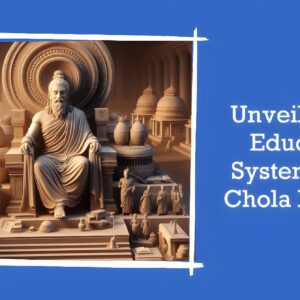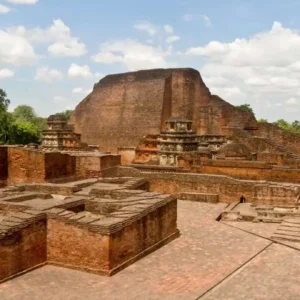Introduction
Medieval Indian history often remains overlooked in comparison to other periods, yet it holds immense significance in shaping the cultural and social fabric of the nation. This article aims to shed light on the secrets and splendours of this captivating era, bringing to the forefront the remarkable dynasties, socio-cultural aspects, economic networks, technological advances, art, architecture, warfare, feminine influence, and the lasting legacy of medieval India.
Table of Contents
Understanding the Medieval Period
The medieval period in Indian history spans from the 10th to the 18th century, encompassing a time of great transformation and exploration. Its emergence stems from key events such as the decline of the Gupta Empire and the invasions of Arab and Turkish forces. These invasions not only moulded the socio-political landscape of medieval India but also fostered a unique syncretism of Hindu and Islamic cultures, yielding a vibrant and diverse society.
Exploring the Dynasties
a) Delhi Sultanate
The Delhi Sultanate marked a significant chapter in medieval Indian history as it witnessed the rise and establishment of Muslim rule in the region. The visionary leadership of rulers like Qutb-ud-din Aibak, Iltutmish, and Alauddin Khalji transformed the Delhi Sultanate into a powerful empire. Their contributions and legacies can be seen in magnificent architectural landmarks such as the Qutub Minar and the Alai Darwaza. These architectural marvels bear witness to the fusion of Islamic and Indian influences, contributing to the cultural heritage of medieval India.
b) Vijayanagara Empire
With its glorious rise and expansion, the Vijayanagara Empire showcased the brilliance of medieval India. Led by notable rulers like Krishnadevaraya, this empire witnessed a renaissance of sorts, emphasizing art, culture, and trade. The architectural grandeur of Hampi, the capital city, still astonishes visitors to this day. Temple complexes like Virupaksha Temple demonstrate the intricate carvings, sculptures, and vibrant paintings that embodied the artistic achievements of the Vijayanagara Empire.
c) Mughal Empire
One cannot discuss medieval Indian history without delving into the glorious Mughal Empire. With the arrival of Babur and subsequent Mughal rulers, India witnessed a golden age of art, literature, and architecture. Prominent Mughal emperors such as Akbar, Jahangir, and Shah Jahan contributed to the flourishing of these realms, leaving behind legacies like the Taj Mahal, Fatehpur Sikri, and intricate miniature paintings. Under Mughal patronage, artists, poets, and scholars thrived, resulting in a rich cultural tapestry that continues to inspire awe.

4. Socio-Cultural Aspects
a) Religion and Beliefs
The medieval period in India witnessed the coexistence of diverse religions like Hinduism, Islam, and various indigenous faiths. This era fostered an environment of religious syncretism, where interactions between different religious communities led to the emergence of unique practices and beliefs. Spiritual and mystical traditions, such as Sufism and Bhakti, gained prominence during this time, influencing both literature and philosophy. Medieval Indian society embodied tolerance and inclusivity, fostering an atmosphere conducive to spiritual growth and intellectual exchanges.
b) Literature and Languages
The medieval period gave birth to literary masterpieces that continue to captivate readers today. Prominent works such as the Ramayana of Tulsidas, the poetry of Mirabai, and the compositions of Amir Khusrau personify the rich literary heritage of medieval India. The era also witnessed the Bhakti and Sufi movements, where devotees expressed their love and devotion to the divine through poetry and songs. Furthermore, the evolution of regional languages like Hindi, Bengali, and Tamil, along with the development of scripts such as Devanagari and Gurmukhi, showcased the linguistic diversity and cultural richness of medieval India.
c) Music, Dance, and Drama
The medieval era marked an evolution of classical music forms, giving birth to gems like Hindustani and Carnatic music. This period witnessed the development of various musical instruments and the emergence of legendary musicians. Additionally, dance forms like Bharatanatyam, Kathak, and Odissi gained prominence, each with its regional variations. Medieval Indian drama, with its colourful narratives and vivid performances, laid a solid foundation for the modern theatre we see today.
5. Economic and Trade Networks
During the medieval period, India’s economic prowess thrived as it became a hub for trade and commerce, both within its borders and with foreign powers. The maritime trade routes played a crucial role in connecting India to the vibrant economies of Southeast Asia and the Arab world. Urban centres and commercial hubs like Delhi, Hampi, and Surat flourished, fostering a vibrant marketplace of goods and ideas. India’s trade relations with foreign powers not only enriched its economic landscape but also contributed to the cultural exchange and cross-pollination that defined medieval India.
6. Technological Advances
Medieval India witnessed remarkable advancements in architecture, engineering, and agriculture. The fusion of Islamic and Indian architectural styles gave rise to the unique Indo-Islamic architecture that captivates even today. Innovations in irrigation systems and agriculture led to the growth of agricultural productivity, further bolstering India’s economic strength. The era also witnessed the proliferation of knowledge through the establishment of centres of learning like the Nalanda and Takshashila universities. These knowledge hubs disseminated valuable ancient Indian wisdom to scholars from around the world.

7. Art and Architecture
a) Indo-Islamic Architecture
Indo-Islamic architecture, characterized by the fusion of Islamic and Indian architectural styles, stands as a testament to the creative brilliance of medieval India. Structures like the mausoleum of Humayun, the Jama Masjid, and the Red Fort in Delhi exemplify the unparalleled aesthetic features and symbolism inherent in Indo-Islamic architecture. The exquisite combination of intricate geometric patterns, delicate calligraphy, and majestic symmetry present a visual narrative of medieval Indian history.
b) Temple Architecture
Temple architecture in medieval India witnessed a remarkable evolution, showcasing the artistic finesse and spiritual devotion of the era. The temples such, as the Sun Temple of Konark, the Kailashnath Temple of Ellora and the Meenakshi Amman Temple of Madurai are adorned with carvings, sculptures and artistic representations that transport visitors to a realm of divine splendour and awe-inspiring architectural magnificence. These temples stand as enduring symbols of medieval India’s artistic and spiritual legacy.

8. Warfare and Military Strategies
Medieval Indian warfare was marked by strategic military organizations and hierarchies. Innovations in military tactics and weaponry, including the introduction of artillery and war elephants, played a crucial role in battles and conflicts. Notable battles, such as the Battle of Panipat and the Siege of Golconda, continue to be remembered for their impact on the course of medieval Indian history. Military strategies employed during this era laid the foundation for future military endeavours, shaping India’s defence systems and military traditions.

9. Feminine Influence and Empowerment
Women in medieval Indian society played significant roles, defying traditional gender norms and making lasting contributions. Prominent queens like Razia Sultana and Rani Padmini showcased exemplary leadership and influence. Female voices in arts and literature, such as the works of the mystic poet Lal Ded, showcased the immense creative potential of women during this era. Their stories and legacies continue to inspire and empower women even today.

10. Decline and Legacy
The decline of medieval Indian empires can be attributed to various factors, including invasions by foreign powers, internal conflicts, and the rise of regional kingdoms. Despite the decline, the medieval era’s influence on modern India remains profound. From architectural treasures like the Taj Mahal to the intricate textile traditions that have endured over the centuries, India’s medieval heritage continues to shape the nation’s identity. Preserving and appreciating this legacy is crucial in understanding the roots and complexities of contemporary India.

11. Summary
The medieval era in Indian history is a treasure trove of secrets and splendours. It brought forth magnificent dynasties, fostered socio-cultural interactions, witnessed economic prosperity, achieved technological advancements, birthed awe-inspiring art and architecture, perfected military strategies, empowered women, and left an indelible legacy. Understanding this era is essential in appreciating India’s rich cultural landscape and its path to becoming the nation it is today.




